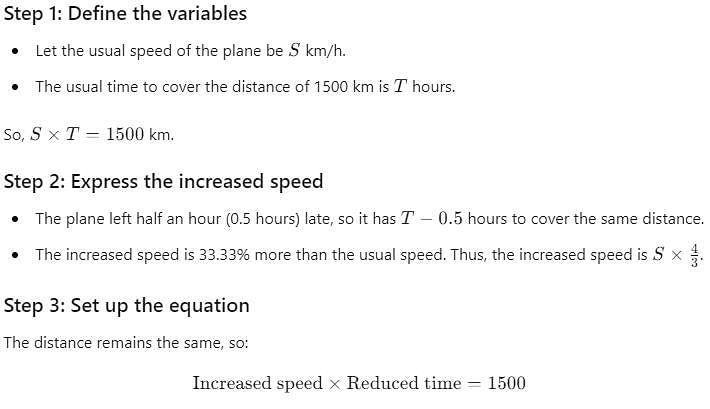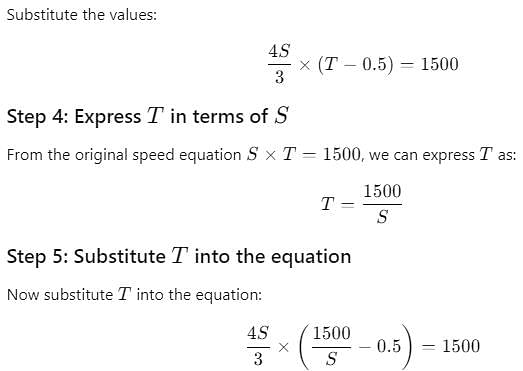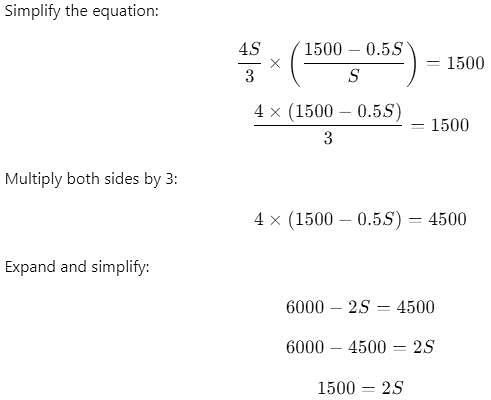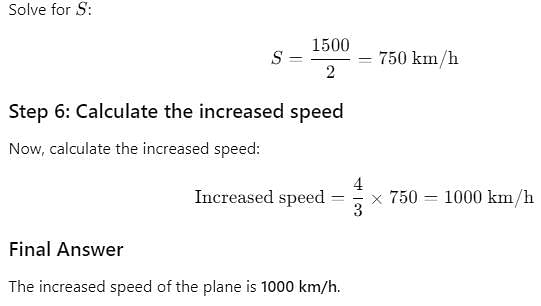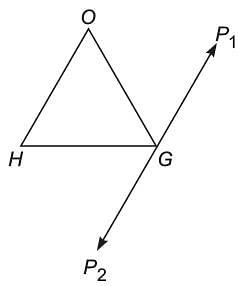Test Level 1: Speed, Time and Distance - 2 - CAT MCQ
20 Questions MCQ Test - Test Level 1: Speed, Time and Distance - 2
What is the time taken by Chandu to cover a distance of 360 km by a motorcycle moving at a speed of 10m/s?
Rajdhani Express travels 650 km in 5 h and another 940 km in 10 h. What is the average speed of train?
| 1 Crore+ students have signed up on EduRev. Have you? Download the App |
Rishikant, during his journey, travels for 20 minutes at a speed of 30 km/h, another 30 minutes at a speed of 50 km/h, and 1 hour at a speed of 50 km/h and 1 hour at a speed of 60 km/h. What is the average velocity?
Narayan Murthy walking at a speed of 20 km/h reaches his college 10 minutes late. Next time he increases his speed by 5 km/h, but finds that he is still late by 4 minutes. What is the distance of his college from his house?
A motor car does a journey in 17.5 hours, covering the first half at 30 km/h and the second half at 40 km/h. Find the distance of the journey.
Manish travels a certain distance by car at the rate of 12 km/h and walks back at the rate of 3 km/h. The whole journey took 5 hours. What is the distance he covered on the car?
A car driver, driving in a fog, passes a pedestrian who was walking at the rate of 2 km/h in the same direction. The pedestrian could see the car for 6 minutes and it was visible to him up to a distance of 0.6 km. What was the speed of the car?
Harsh and Vijay move towards Hosur starting from IIM, Bangalore, at a speed of 40 km/h and 60 km/h respectively. If Vijay reaches Hosur 200 minutes earlier then Harsh, what is the distance between IIM, Bangalore, and Hosur?
A passenger train takes 2 h less for a journey of 300 kilometres if its speed is increased by 5 kmph over its usual speed. Find the usual speed.
A plane left half an hour later than the scheduled time and in order to reach its destination 1500 kilometre away in time, it had to increase its speed by 33.33 per cent over its usual speed. Find its increased speed.
A train moves at a constant speed of 120 km/h for one kilometre and at 40 kmph for the next one kilometre. What is the average speed of the train?
A person travelled a distance of 200 kilometre between two cities by a car covering the first quarter of the journey at a constant speed of 40 km/h and the remaining three quarters at a constant speed of x km/h. If the average speed of the person for the entire journey was 53.33 km/h what is the value of x?
Two cars started simultaneously toward each other from town A and B, that are 480 km apart. It took the first car travelling from A to B 8 hours to cover the distance and the second car travelling from B to A 12 hours. Determine at what distance from A the two cars meet.
X and Y are two stations 600 km apart. A train starts from X and moves towards Y at the rate of 25 km/h. Another train starts from Y at the rate of 35 km/h. How far from X they will cross each other?
A starts from a point that is on the circumference of a circle, moves 600 metre in the North direction and then again moves 800 metre East and reaches a point diametrically opposite the starting point. Find the diameter of the circle?
A motorboat went downstream for 28 km and immediately returned. It took the boat twice as long to make the return trip. If the speed of the river flow were twice as high, the trip downstream and back would take 672 minutes. Find the speed of the boat in still water and the speed of the river flow.
Walking at 3/4 of his normal speed, Abhishek is 16 minutes late in reaching his office. The usual time taken by him to cover the distance between his home and his office is
Two trains for Mumbai leave Delhi at 6 : 00 a.m. and 6 : 45 a.m. and travel at 100 kmph and 136 kmph respectively. How many kilometres from Delhi will the two trains be together?
Shyam’s house, his office and his gym are all equidistant from each other. The distance between any 2 of them is 4 km. Shyam starts walking from his gym in a direction parallel to the road connecting his office and his house and stops when he reaches a point directly east of his office. He then reverses direction and walks till he reaches a point directly south of his office. The total distance walked by Shyam is
Walking at 3/4 of his normal speed, a man takes 2(1/2) hours more than the normal time. Find the normal time.


